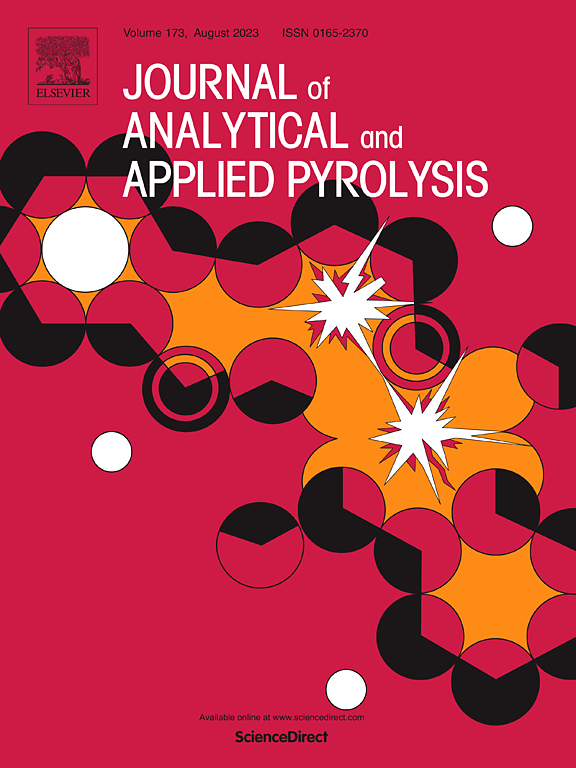Two-dimensional plot of Py-GC based on retention index to depict the compositional distribution of pyrolysates of olefin polymers
IF 5.8
2区 化学
Q1 CHEMISTRY, ANALYTICAL
引用次数: 0
Abstract
Pyrolysis-gas chromatography is utilized as an effective method for the characterization of polymers. The notorious complexity of the resultant pyrograms, however, makes it difficult to overview and compare the numerous pyrogram differences. Inspired by Kendrick mass defect plots used in high-resolution mass spectrometry, we propose here a new form of graphical representation of the chemical structure of polymers that visualizes the distribution of a set of pyrolysates on a two-dimensional plot that is based on the retention index (RI). When the elution time of a chromatographic peak is expressed relative to the carbon number of the n-alkane, the integer part should reflect the carbon number, and the decimal part should reflect the structural difference from the saturated version of the same hydrocarbon. We proceeded by dividing the RI/100 values into integer and decimal parts and created a two-dimensional plot, which we call an RI defect (RID) plot. To explain the features and effectiveness of this method, we present here several examples of its application to the characterization of polyolefins. The RID plot is first demonstrated by applying it to the identification of polyethylenes (PEs) with different short-chain branching patterns and polypropylenes (PPs) with different stereoregularities. This technique was further applied to the characterization of recycled PP resins, by which we were able to visualize the compositional distribution of minor PE components of major PP. Furthermore, a differential reading technique combined with the RID plot allowed for a rough classification of recycled PP based on the composition of the PE components.
求助全文
约1分钟内获得全文
求助全文
来源期刊
CiteScore
9.10
自引率
11.70%
发文量
340
审稿时长
44 days
期刊介绍:
The Journal of Analytical and Applied Pyrolysis (JAAP) is devoted to the publication of papers dealing with innovative applications of pyrolysis processes, the characterization of products related to pyrolysis reactions, and investigations of reaction mechanism. To be considered by JAAP, a manuscript should present significant progress in these topics. The novelty must be satisfactorily argued in the cover letter. A manuscript with a cover letter to the editor not addressing the novelty is likely to be rejected without review.

 求助内容:
求助内容: 应助结果提醒方式:
应助结果提醒方式:


